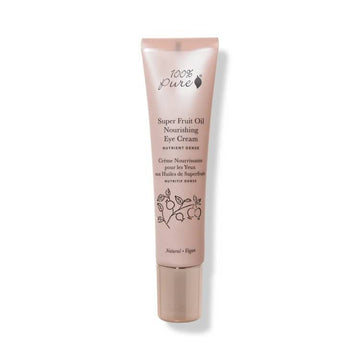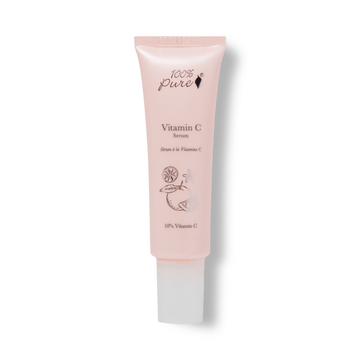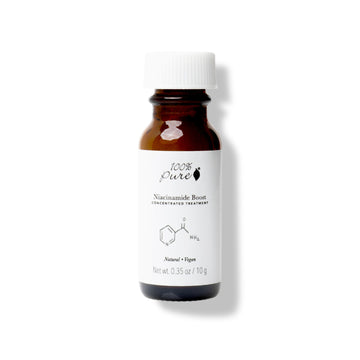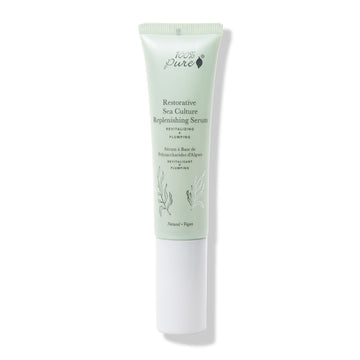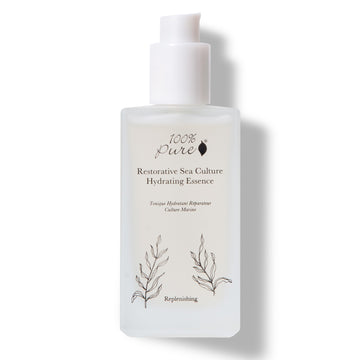Why it’s better to avoid synthetic chemicals that could be causing harmful chemical reactions on your skin.
Written by: 100% PURE®
Have you ever looked up what’s in your makeup or skin care? If you’re any ingredient detective of sorts, you’re probably an experienced decipherer of those lengthy ingredient lists. While you might know which harmful chemicals you should avoid, other ingredients can be seemingly innocent – until they’re found guilty of not playing nicely with others.
Since we’re not all professional label investigators or trained cosmetic formulators, we tend to trust the FDA to make sure our beauty products are safe for our skin and bodies, right? Not quite. Without heavy regulation by the FDA on cosmetic labeling, who’s there to warn you?
Luckily our founder and expert formulator Susie Wang is extremely experienced, and always has your health as her top priority when formulating 100% PURE products. Let’s talk a little science about cosmetic ingredients, and which ones don’t play well when mixed together – plus some beauty do’s and don’ts to avoid harming your skin.
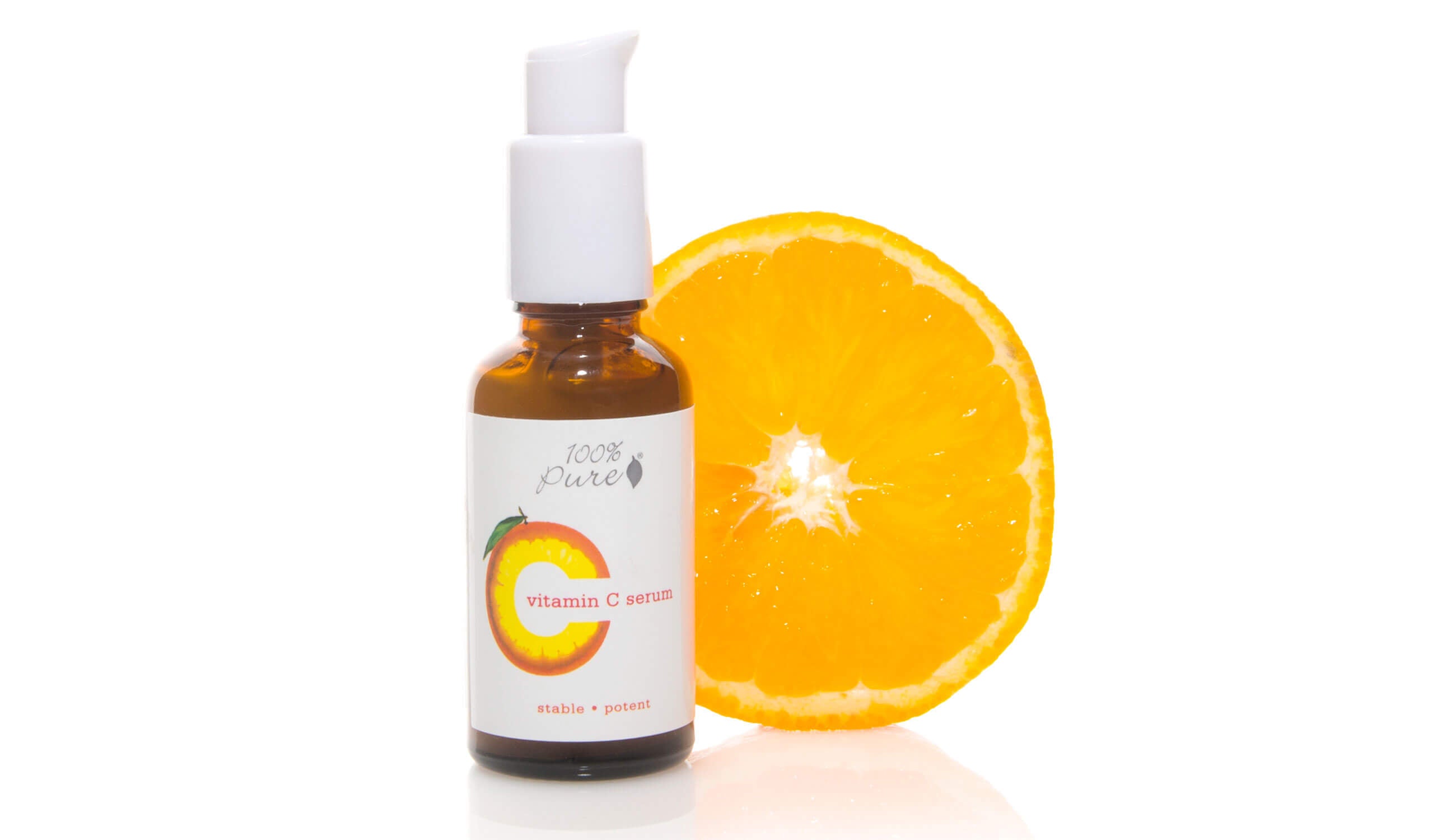
Do you know how our founder Susie Wang first entered the world of cosmetic formulating? When she was in college, she saved up money to purchase a vitamin C serum from a department store. But after opening the bottle, Susie noticed that the once-white serum turned into a tarnished brown, meaning that the vitamin C had oxidized.
Once vitamin C starts oxidizing, it not only loses its potency, but also converts into skin-damaging free radicals. Can you imagine hoping to cure your skincare woes with an expensive serum, only to damage it instead? Don’t be scared off by vitamin C yet, because Susie figured out a way to stabilize it so you can enjoy all its benefits without sacrificing your health.
Our Vitamin C Serum is stable and potent enough for day and nighttime skin care routines, but it really comes down to your skin type and sensitivity level. But if you do wear it during the day, you should wear it under a broad-spectrum SPF. Studies have shown that pairing vitamin C with sun protection may actually boost free radical defense!
Our formula includes both vitamin C and antioxidant vitamin E to help heal and rejuvenate skin. It also features alpha lipoic acid to promote cellular regeneration and gently resurface skin, and green apple to boost the vibrance of your complexion.
Vitamin C is a timeless anti-aging and brightening classic in skin care routines if you know how to properly use this super star ingredient. There are other ways that vitamin C can cause chemical reactions and damage your skin.
This citrus C-elebrity when paired with niacinamide are usually a big NO in cosmetic formulations. That’s because conventional cosmetic companies use vitamin C with a low pH level of around 2 to 3, like ascorbic acid, which isn’t compatible with the more neutral pH of 6 to 7 of niacinamide.
We use a higher quality, more stable version of vitamin C called magnesium ascorbyl phosphate, which has a pH level of 6 to 7 like niacinamide. That means our form of vitamin C can coexist with niacinamide without causing a harmful chemical reaction on your skin, allowing you to reap the benefits of both vitamins in our Multi-Vitamin + Antioxidants Potent PM Serum. This serum is formulated to heal, restore, and renew your skin while you sleep.
Newsletter Subscribe
for more blog updates and exclusive discounts
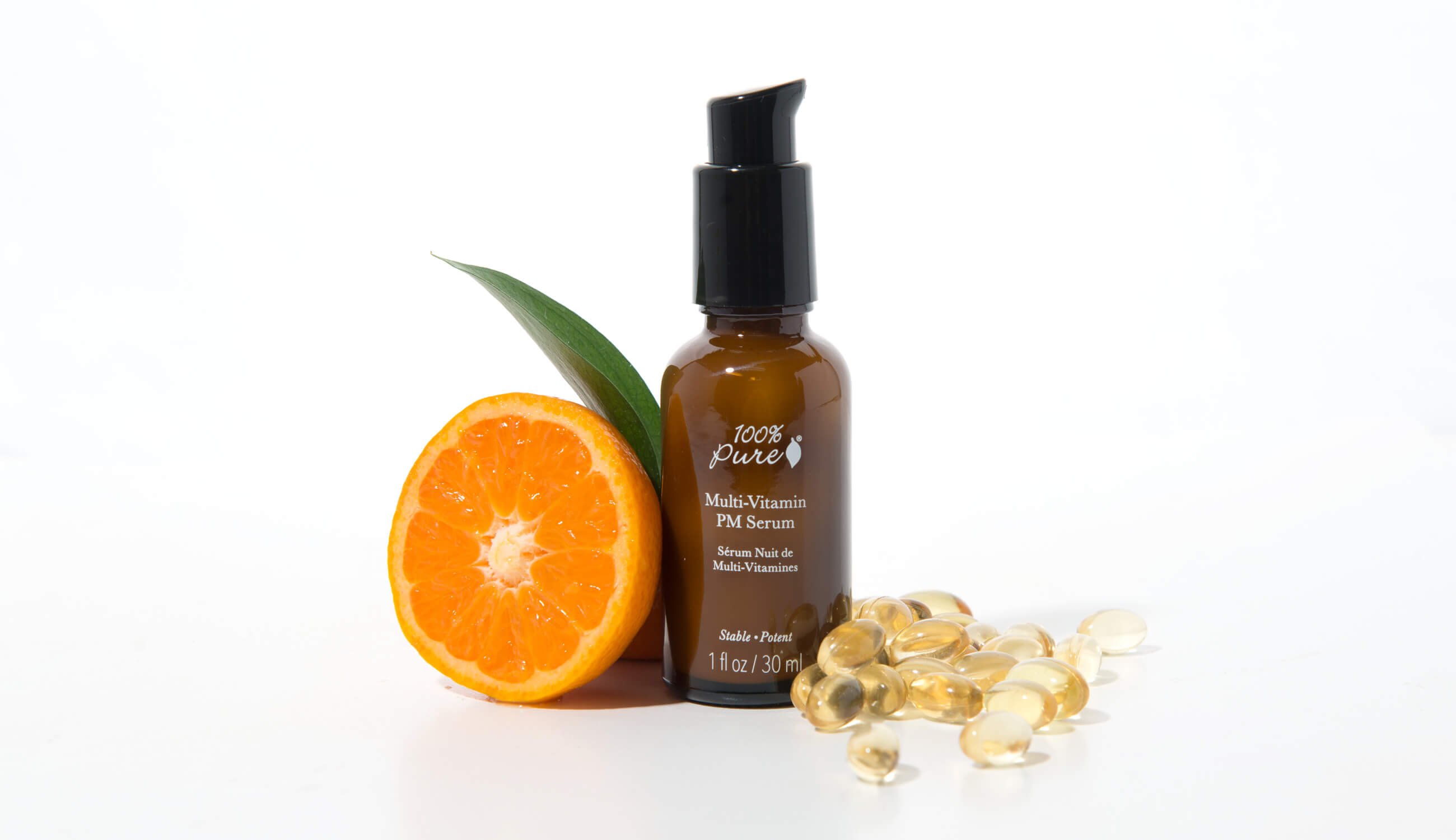
There are so many nuances and properties of cosmetic ingredients that it would be impossible to know all of them and how they interact with each other. That is unless you had more than a decade of experience that our founder Susie Wang has at formulating beauty products.
Another problem with lower quality, less stable forms of vitamin C is that it reacts with sodium benzoate to form benzene, which is a known carcinogenic to humans. That spells major trouble, since sodium benzoate is widely used as a preservative in food, beverages, cosmetics, and other personal care products.
While it may be simple enough to nix any of your skin care products that have both vitamin C and sodium benzoate, we’ve decided it’s easier to just use natural preservatives instead that work synergistically with vitamin C.
Our natural preservative system runs on Japanese honeysuckle, thyme, oregano, goldenseal, rosemary, lavender, as well as a high concentration of vitamins and antioxidants to preserve our formulas. These ingredients are not only safe for your skin in combination with other cosmetic ingredients, but also have soothing benefits for your dermis too. It’s natural preservatives like these that you’ll find in all of our products, including our most skin-restorative formulas like our Restorative Sea Culture Replenishing Serum and our Restorative Sea Culture Hydrating Toner.

You’ve heard us warn you enough about the hundreds of chemicals that should be banned from cosmetics, like formaldehyde, which has been linked to cancer, yet is still being used in nail polishes. We don’t mean to be alarmist, but we wonder if cosmetic companies and the FDA are really cautioning you enough to the risk that cosmetic ingredients can pose to your health.
For example, while your favorite mascara or body wash may not actually contain the word ‘formaldehyde’ on its ingredients label, it can include ingredients that release formaldehyde over time. That’s right, common synthetic preservatives such as DMDM Hydantoin (commonly used in shampoos), bronopol (found in eye makeup), and glyoxal (used in nail polish) are all formaldehyde-releasers.
Rather than risking our health to a carcinogen, we stick to our favorite natural preservatives, such as Japanese honeysuckle known for its soothing and antimicrobial benefits. We also use a vegetable-derived compound of vitamin E or tocopherol, which is a great natural preservative for cosmetics because as an antioxidant, it helps to repair and fortify the skin against environmental damage.
And in products like our Super Fruit Oil Nourishing Eye Cream, we also use grapefruit seed extract, also sometimes labeled as GSE, as a natural preservative that has been around for decades. High in healthy antioxidants like vitamins E and C, grapefruit seed supports healthy, glowing skin.
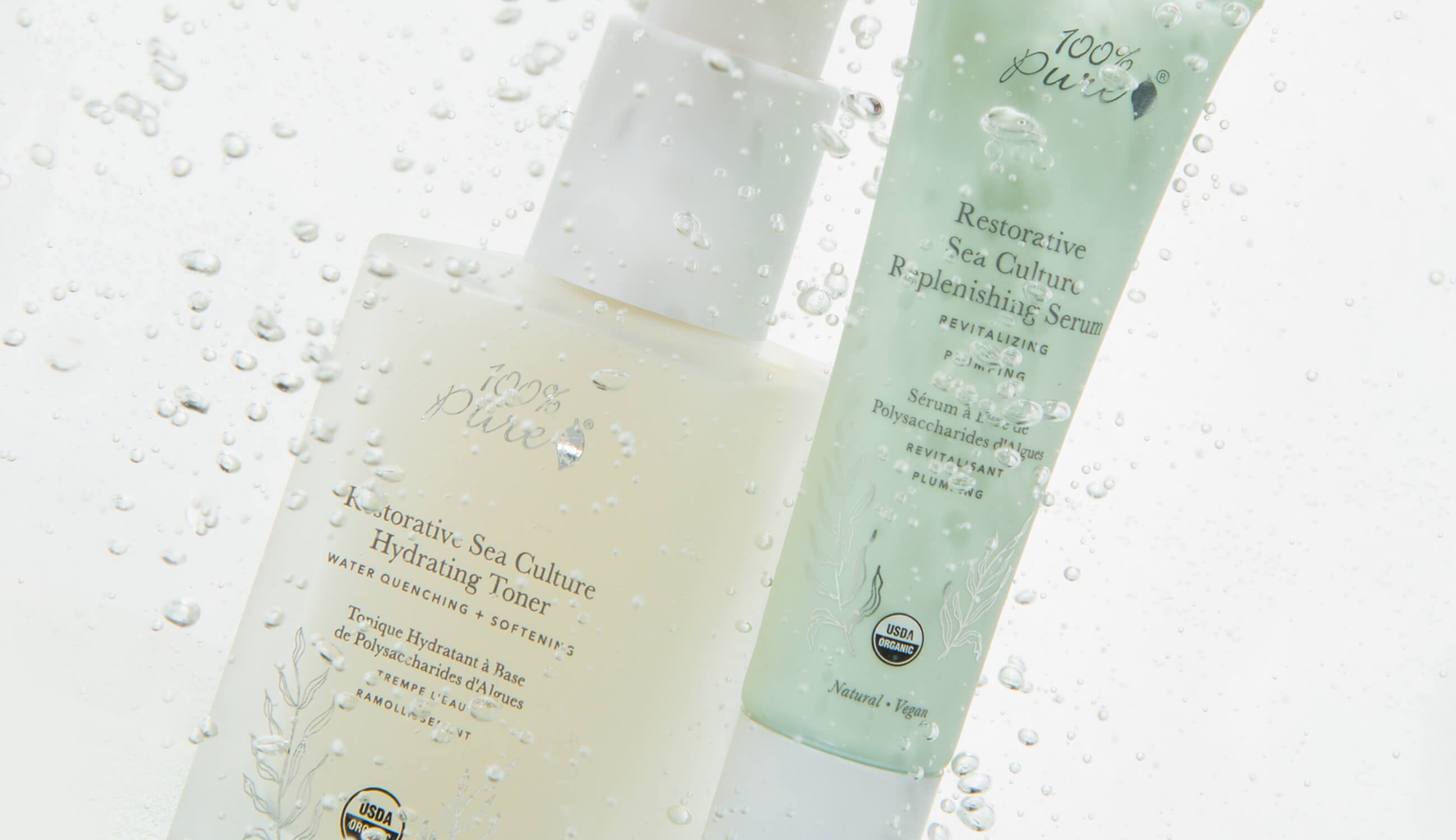
Do you think everything you need to know about the cosmetic ingredients in your favorite beauty products is on the label? Think again. You might be familiar with seeing the ingredient “fragrance” on one or many of your skin care products. While we do love ourselves a heavenly lotion that smells like vanilla, fragrance is a lot more toxic than it sounds.
The terms fragrance or perfume are actually used as umbrella terms for a mix of cosmetic ingredients in the formula. However, the FDA doesn’t require companies to list the exact ingredients in their fragrance formulas, supposedly to protect “trade secrets.” The FDA even acknowledges that phthalates, which have been linked to endocrine disruption and birth defects, are commonly used in fragrance ingredients. Who knows what other damaging ingredients could be lurking under these terms.
You could be doing your best to avoid formaldehyde-releasing ingredients, only to have them unknowingly appear in your beauty products under the name fragrance or perfume. Who would ever know? We do, and we want you to know, too.
We remain committed to barring these synthetic fragrances from our formulas. We can do better than that (have you heard about our chocolate-scented mascaras that have real cocoa powder in them?) If you haven’t, here’s the chance to discover the healthy and wealth of benefits from natural fruit- and vegetable- pigmented products that we feature in our beauty and skin care lineups.
We’re passionate about natural ingredients because of their positive skin, body, and health benefits. We know that you shouldn’t be an ingredient detective to find your favorite skin care and beauty products. That’s where we come in - naturally sourced and thoughtful formulas that are gentler on both your skin, health, and the planet. That’s a win-win for everyone involved!
Why Should Retinol and Vitamin C Not Be Used Simultaneously?
Retinol (a form of Vitamin A) and Vitamin C (ascorbic acid) are both potent anti-aging and skin-brightening ingredients. However, using them simultaneously can cause irritation for some people because both have strong activities that may lead to skin sensitivity when applied together. Vitamin C thrives in a lower pH (acidic) environment, while retinol requires a higher pH (less acidic) environment to remain stable. This pH discrepancy can make both less effective and increase the risk of irritation. Many experts suggest using Vitamin C in the morning to protect the skin from free radical damage during the day and retinol at night to support skin renewal while you sleep.
How Can the Combination of Certain Ingredients Lead to Skin Irritation?
Skin irritation from combining certain ingredients occurs due to various reasons, including:
- Over-exfoliation: Using multiple products with exfoliating acids (like glycolic, lactic, or salicylic acid) alongside retinol can strip the skin of its natural oils, leading to irritation, dryness, and sensitivity.
- pH Imbalance: Combining ingredients that require significantly different pH levels for optimal efficacy can disrupt the skin's acid mantle, causing irritation and weakening the skin barrier.
- Active Ingredient Overload: Using multiple potent active ingredients (like retinol, Vitamin C, benzoyl peroxide) simultaneously can overwhelm the skin, leading to redness, peeling, and sensitivity.
Why Should Niacinamide and Vitamin C Be Used Separately?
The idea that niacinamide and Vitamin C should not be used together is based on outdated research. Initially, it was thought that they could neutralize each other and form a complex that would reduce their effectiveness and potentially cause irritation. However, recent studies suggest that when formulated properly, these ingredients can be stable and effective when used together. Still, some people prefer to use them separately (Vitamin C in the morning and niacinamide at night, for instance) to avoid any potential risk of irritation or to maximize their benefits by using them at different times of the day.
What Precautions Should Be Taken When Using Products with Salicylic Acid?
Salicylic acid is a beta-hydroxy acid (BHA) known for its ability to penetrate into the pores and exfoliate the skin, making it highly effective for treating acne. When using products containing salicylic acid, consider the following precautions:
- Patch Test: Always do a patch test before using a new product to ensure you don't have a sensitivity or allergic reaction.
- Sun Protection: Salicylic acid can make the skin more sensitive to UV radiation. Always use a broad-spectrum sunscreen during the day.
- Moisturize: Salicylic acid can be drying. Use a non-comedogenic moisturizer to help maintain your skin's hydration levels.
- Start Slowly: If new to salicylic acid, start with lower concentrations and use it every other day, gradually increasing as your skin builds tolerance.
Can Mixing Hyaluronic Acid with Other Ingredients Cause Issues
Hyaluronic acid is a powerful humectant that attracts water to the skin, helping to hydrate and plump the skin. It is generally well-tolerated and can be combined with most other skincare ingredients without causing issues. In fact, hyaluronic acid is often included in formulations with retinol, Vitamin C, and other acids to mitigate potential irritation and support skin hydration. However, it's essential to follow product instructions and not to overload the skin with too many active ingredients at once, even with something as benign as hyaluronic acid, to avoid overwhelming the skin and disrupting its barrier function.
- Tags: February-2024, Susies Lab
We carefully hand-select products based on strict purity standards, and only recommend products we feel meet this criteria. 100% PURE™ may earn a small commission for products purchased through affiliate links.
The information in this article is for educational use, and not intended to substitute professional medical advice, diagnosis, or treatment and should not be used as such.


